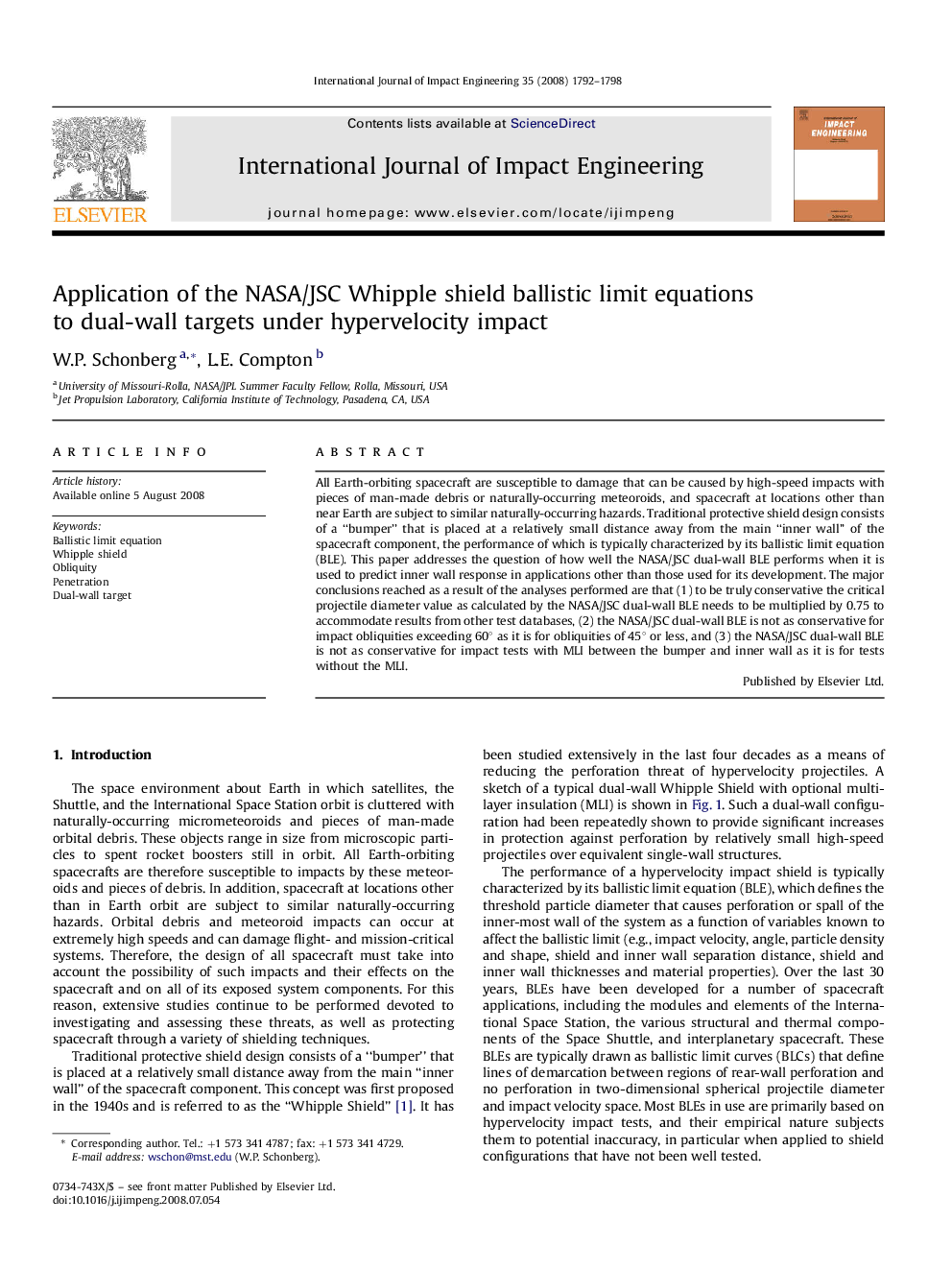| Article ID | Journal | Published Year | Pages | File Type |
|---|---|---|---|---|
| 779504 | International Journal of Impact Engineering | 2008 | 7 Pages |
All Earth-orbiting spacecraft are susceptible to damage that can be caused by high-speed impacts with pieces of man-made debris or naturally-occurring meteoroids, and spacecraft at locations other than near Earth are subject to similar naturally-occurring hazards. Traditional protective shield design consists of a “bumper” that is placed at a relatively small distance away from the main “inner wall” of the spacecraft component, the performance of which is typically characterized by its ballistic limit equation (BLE). This paper addresses the question of how well the NASA/JSC dual-wall BLE performs when it is used to predict inner wall response in applications other than those used for its development. The major conclusions reached as a result of the analyses performed are that (1) to be truly conservative the critical projectile diameter value as calculated by the NASA/JSC dual-wall BLE needs to be multiplied by 0.75 to accommodate results from other test databases, (2) the NASA/JSC dual-wall BLE is not as conservative for impact obliquities exceeding 60° as it is for obliquities of 45° or less, and (3) the NASA/JSC dual-wall BLE is not as conservative for impact tests with MLI between the bumper and inner wall as it is for tests without the MLI.
